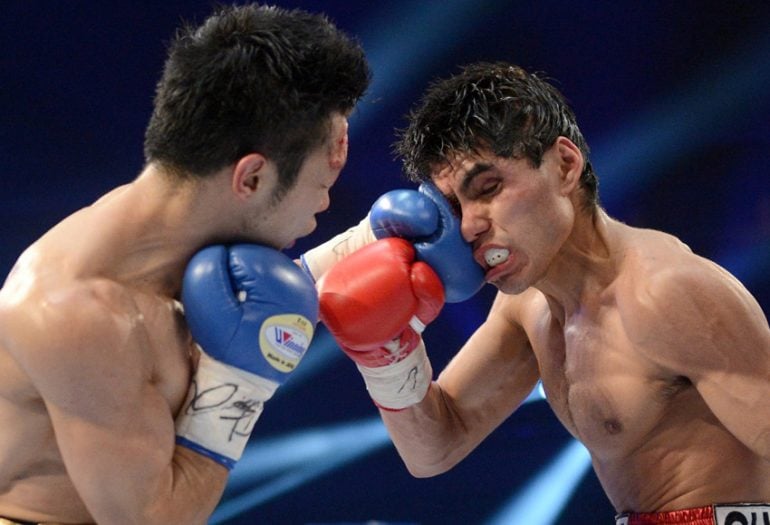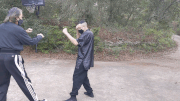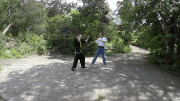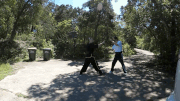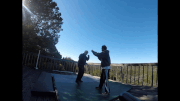The videos I posted above explain things better than I can, since I'm not great at most long range hooks myself. (Although I have some success with check hooks.)I usually only use “hooks“ up close, it may be that I don’t have the proper training to use them well at distance. It feels too slow and easy to avoid at distance. I have eaten a few straight right hands as a result of crossing the center line on a high distanced hook and missing. Any tips?
But if I had to sum up most of what I've observed from the people who are good at them, it seems to come down to a couple of important elements:
- Setups. If you wind up your hook as you slip your opponent's punch or as you get them covering up from your own punches, then they are less likely to be able to nail you with a straight punch as you throw your hook.
- Footwork and angles. If you change your angle relative to your opponent, you make it harder for them to intercept you with a straight punch. In fact, if you coordinate your footwork, angles, and punching just right, you can make it so that your looping punch is actually travelling a more efficient route to the target than a straight punch would be. Go back and check out the video I posted earlier of Dominick Cruz and look at some of the fully extended long fist style looping punches he is landing. Those only work because of his footwork.

